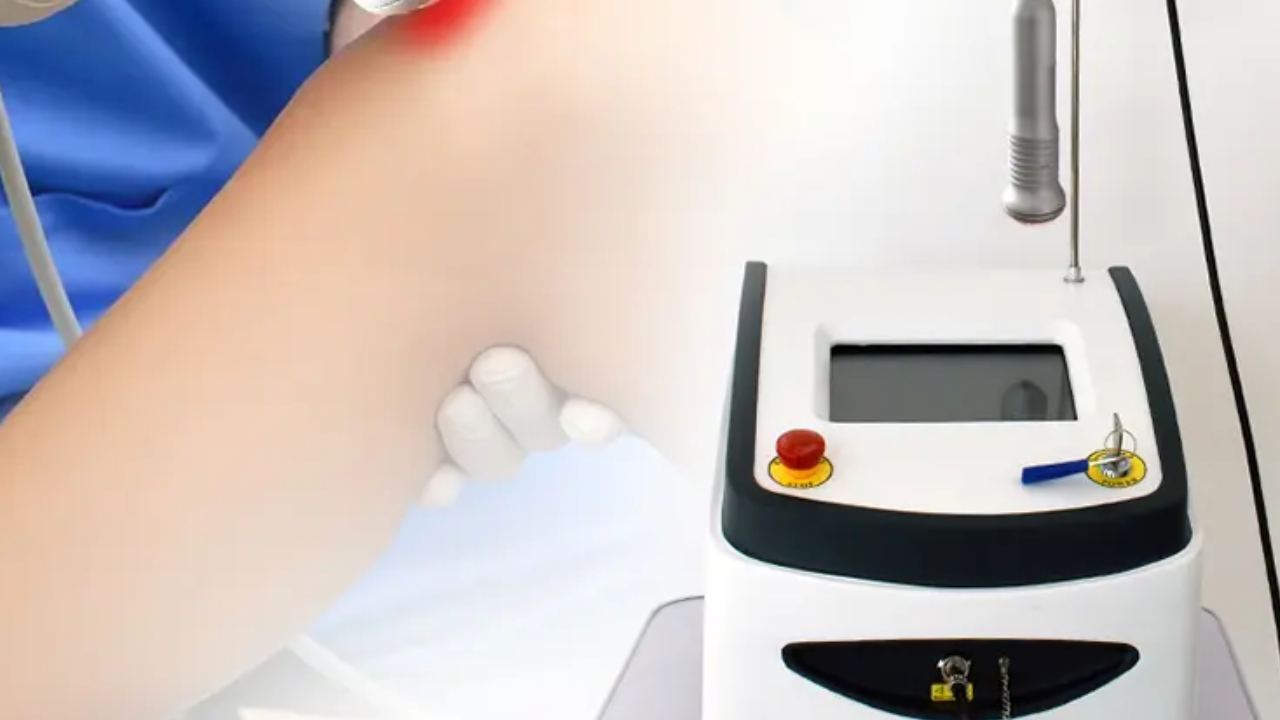Low-intensity lasers or light-emitting diodes (LEDs) are used in cold laser therapy, sometimes referred to as Low-level laser therapy (LLLT), to stimulate biological processes. Cold lasers, in contrast to traditional lasers, penetrate the skin without inflicting damage because they release non-thermal light. Following cold laser therapy, the injured individual may discharge a material morphia.
The market is filled with a wide variety of cold laser therapy devices. Some varieties aren't even lasers even lasers, in actuality. Click the link https://healthcaremarts.com/products/60w-980nm-high-power-class-4-laser to view more details about laser devices. A few Cold Laser Therapy Devices use light that isn't coherent and comes from a light-eating diode.
Which Wavelength Is Commonly Employed In Cold Laser Devices?
The biological window is the range of laser light wavelengths between 600 and 1000 nm, which allows the light to enter tissues and affect cells. The biological window does not include wavelengths longer than 1000 nm or shorter than 600 nm because light is blocked by the pigments in the skin, hair follicles, blood, and water molecules of the body.
About one to two centimeters of laser light, with a wavelength of between 600 and 700 nm, reach the skin. The best use for this light is on wounds and skin issues. Wavelengths between 800 and 900 nm can reach 3 to 4 cm into the tissue, which is a deeper penetration. The main applications for these light wavelengths are in the management of pain and tissue.
Factors for Selecting Cold Laser Devices
In therapeutic applications, selecting the appropriate cold laser equipment is essential to achieving the best possible outcomes and safety. Making an informed choice when choosing a cold laser device for your particular requirements requires taking into account many described here.
Objectives and Uses of Treatment
It's important to determine your treatment goals and the specific applications you plan to address before diving into technical specifics. For different circumstances, like pain management, wound healing, or dermatological concerns, different cold laser devices may be better suited. Knowing your treatment goals will help you choose equipment that is tailored to your requirements.
Power and Wavelength
One important consideration is the laser light's wavelength, which the gadget emits. Diverse wavelengths impact biological activities in different ways depending on how deeply they penetrate tissues. The wavelengths used in cold laser therapy are usually between 600 and 1000 nanometers. Milliwatts, a unit of measurement for power, is also significant; although it's not necessarily required for surface treatments, larger power may reach deeper.
Class and Safety Of Devices
Based on the possible risks associated with them, cold laser devices are divided into many groups. While Class IV devices have more dangers and necessitate additional safety measures, Classes I, II, and III are considered low-risk It is essential to comprehend the gadget class to guarantee patient and practitioner safety for use.
Options for Pulsing
The term "pulsing" is widely used in therapeutic contexts. Pulsed mode choices are available for both short-wave diathermy and therapeutic ultrasound. In numerous instances, the therapy literature demonstrates that different pulse frequencies have distinct biological effects. It has been proposed that low pulse frequencies should be used to treat acute injuries.
Treatment Length and Continuity
Recognize the suggested length and frequency of laser therapy therapy for the particular device. While some cold laser therapy devices are meant for longer, less frequent treatments, others can call for shorter, more frequent sessions. For you to comply with the treatment plan, it must fit your tastes and way of life.
Conclusion
A comprehensive evaluation of numerous variables, including practical features like portability and ease of use, as well as technical specs, is necessary when choosing the best cold laser equipment. A rehabilitation professional's "toolbox" of therapeutic interventions would benefit greatly from the addition of low-level laser treatment. LLLT has potent physiologic effects that can control pain and speed tissue repair.


